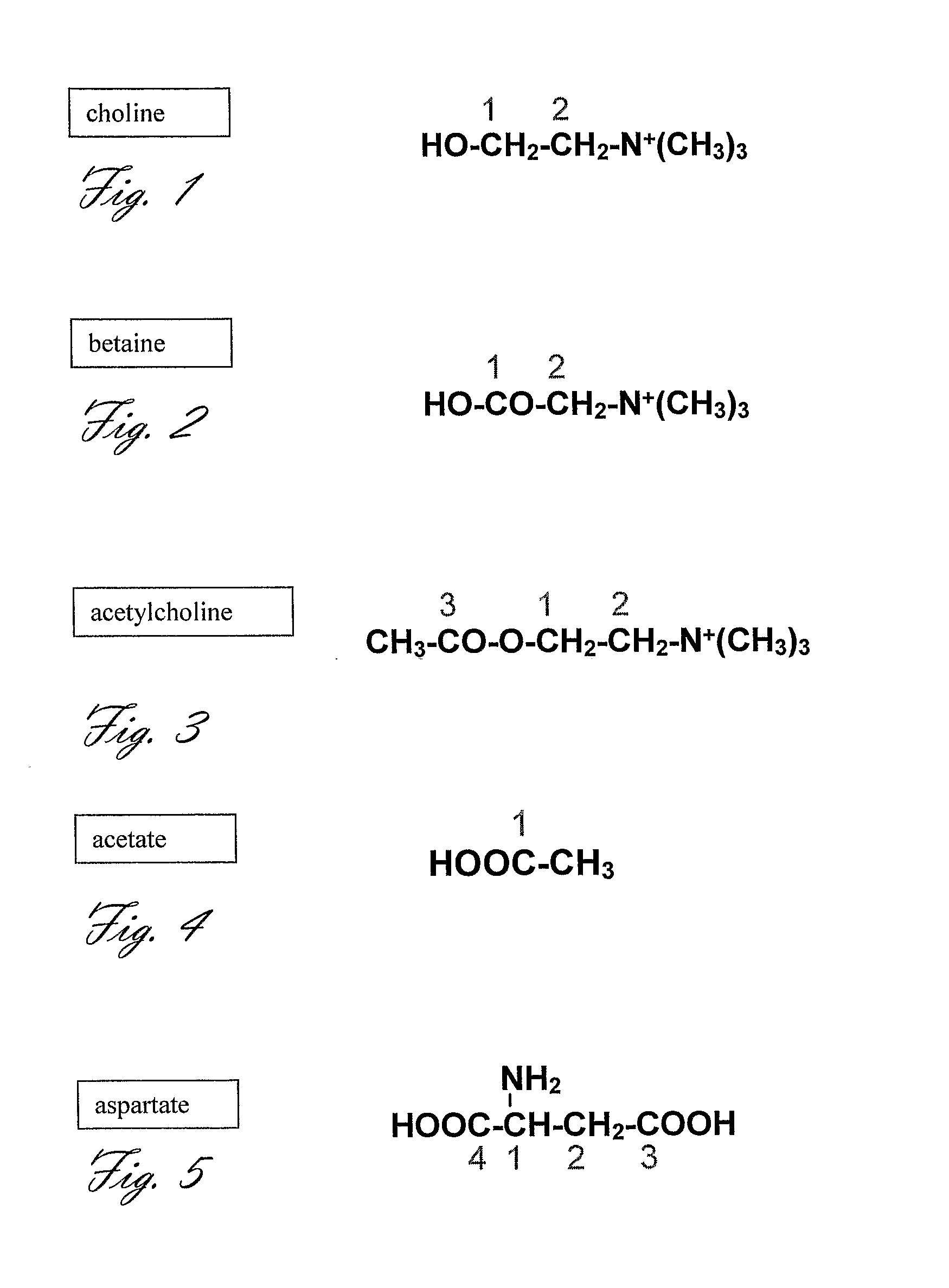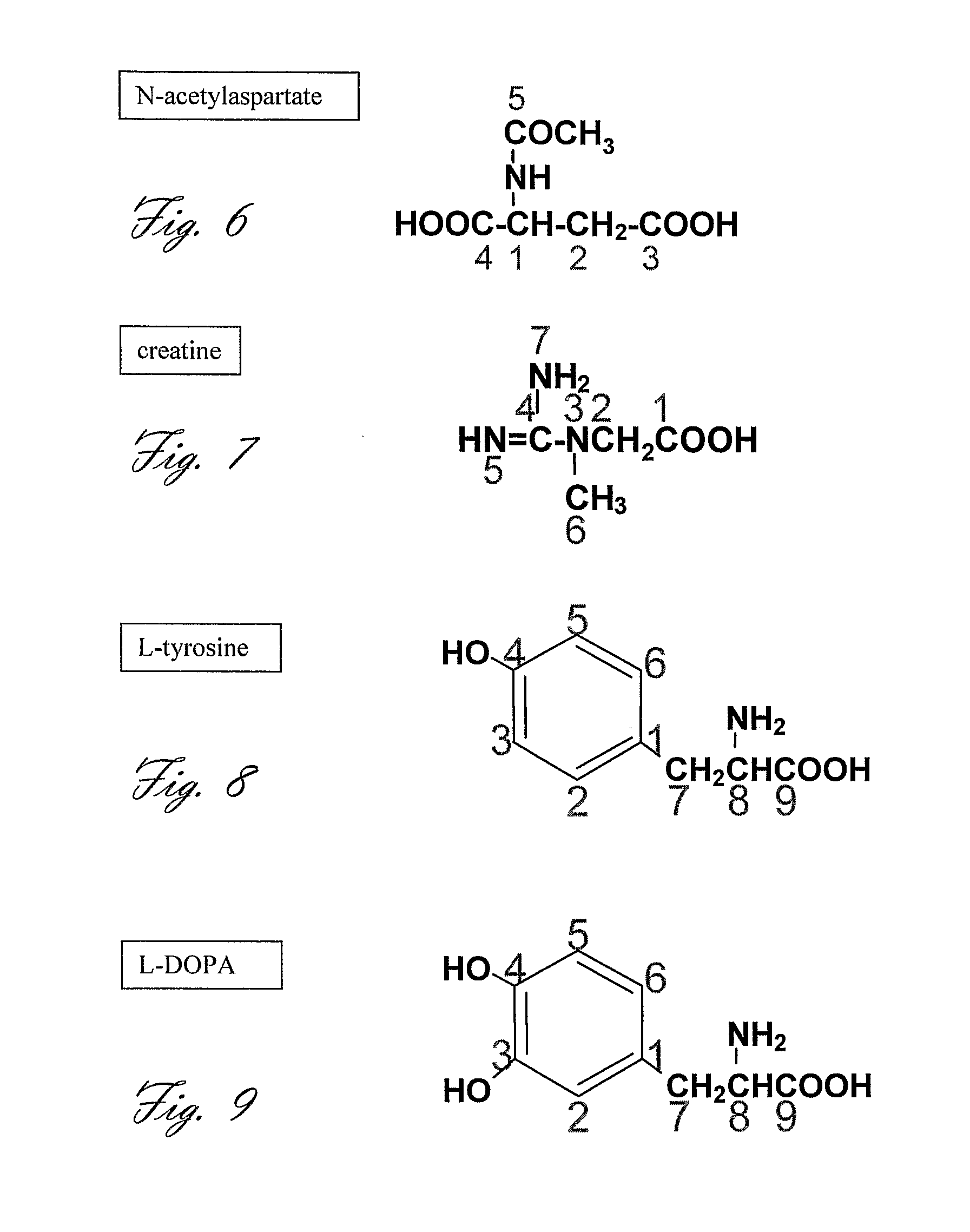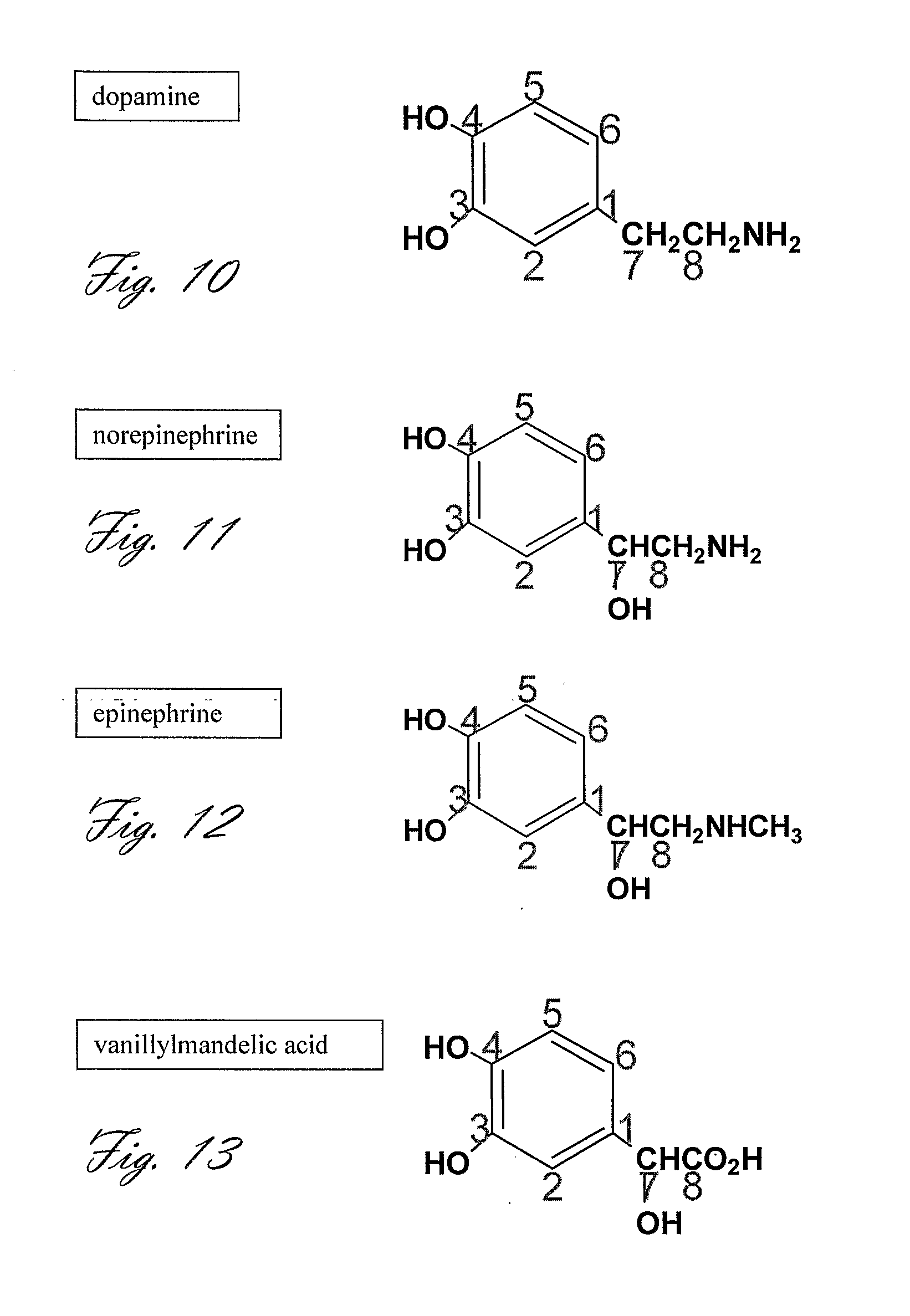Magnetic Resonance Imaging and Spectroscopy Means and Methods Thereof
- Summary
- Abstract
- Description
- Claims
- Application Information
AI Technical Summary
Benefits of technology
Problems solved by technology
Method used
Image
Examples
example 1
Acetylcholine Synthesis in the Brain
[0199]The subject is pretreated with atropine prior to choline injection to prevent cholinergic intoxication.
[0200][2-13C, 15N]-choline (99% 13C-labeled, 99% 15N-labeled 10 mg) is dissolved in 40 mg of 50:50 glycerol:H2O. The trityl radical (Tris{8-carboxyl-2,2,6,6-tetra[2-(1-hydroxyethyl)]-benzo(1,2-d:4,5-d′)bis(1,3)dithiole-4-yl}methyl sodium salt) is added to reach concentrations of either 15 or 20 mM. The mixture is placed in an open top chamber.
[0201]The mixture is polarized by microwaves for at least one hour at a field of 2.5 T at a temperature of 4.2 K (or lower 1.2 K). The progress of the polarization process is followed by in situ NMR recording, according to previously published procedure (Ardenkjaer-Larsen, J. (2001) U.S. Pat. No. 6,278,893).
[0202]When a suitable level of polarization has been reached, the chamber is rapidly removed from the polarizer and, while handled in a magnetic field of no less than 50 mT, the contents are quickly...
experiment 8
[0228]Experiments 1, or 2, or 3, or 4 are performed in a patient that has been diagnosed with a brain tumor. The level and rate of [2-13C, 15N]-choline transport, [2-13C, 15N]-phosphocholine synthesis, and [2-13C, 15N]-betaine synthesis in the investigated tissue aid in the characterization of the tumor or the malignant potential at the tissue surrounding the tumor, as it is known in the art that choline metabolism is altered in malignant tissues. An extension of this experiment is the characterization of tumors in the body, such as tumors in the breast, prostate, and kidney.
example 2
Dopamine Synthesis in the Brain
[0229][13C6]-L-DOPA (99% 13C-labeled phenyl, 10 mg) is hyperpolarized and dissolved according to the procedure described in Example 1.
[0230]The subject is pretreated with a single dose or several doses of aromatic-L-amino-acid decarboxylase inhibitor such as carbidopa or benserazide, or difluoromethyldopa, or α-methyldopa (20 mg, 40 mg, 60 mg, or 80 mg) given orally.
[0231]1 hour after pretreatment with carbidopa, the hyperpolarized solution (cooled to 37° C.), is quickly injected to the subject (preferably in less than 10 sec, or as described in Example 1).
PUM
 Login to View More
Login to View More Abstract
Description
Claims
Application Information
 Login to View More
Login to View More - R&D
- Intellectual Property
- Life Sciences
- Materials
- Tech Scout
- Unparalleled Data Quality
- Higher Quality Content
- 60% Fewer Hallucinations
Browse by: Latest US Patents, China's latest patents, Technical Efficacy Thesaurus, Application Domain, Technology Topic, Popular Technical Reports.
© 2025 PatSnap. All rights reserved.Legal|Privacy policy|Modern Slavery Act Transparency Statement|Sitemap|About US| Contact US: help@patsnap.com



